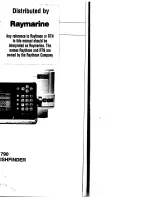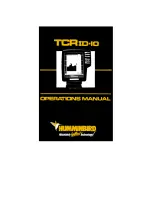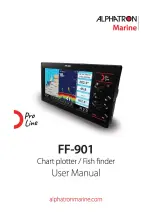
75
Glossary
SONAR (SOund and NAvigation Ranging)
Sonar technology uses precision sound
bursts transmitted underwater to determine the distance and other attributes of objects in
the water. Distance can be determined because the speed of sound in water is constant,
and the time for the signal to return is measured. Sound also travels very quickly
underwater, making sonar a responsive, cost-effective tool. Sonar is the basic technology
behind all recreational and commercial fishfinding and depthfinding devices.
Sonar Update Rate
The number of times per second that the transducer’s
transmitter/receiver sends and receives sonar signals. A very fast sonar update rate collects
more information and provides a more detailed image of the bottom, fish, and structure.
Many Humminbird® units operate at up to 40 times per second when in single frequency
operation. Due to the limitation of the speed of sound in water, the update rate begins to
slow as depth increases to deeper than 50 feet. In very shallow water (less than 10 feet),
however, update rates as much as 60 times per second can be achieved.
Speed
The rate at which the boat moves through the water. Boat speed can be measured
as Speed Over Ground or Speed Through Water. Speed Over Ground is provided by GPS, and
is the measurement of the boats progress across a given distance. Speed Through Water is
provided by a speed paddlewheel, and is the measurement of the flow past the boat, which
may vary depending on current speed and direction. Speed Through Water is most critical
for anglers using downriggers, as it impacts the running depth of the down riggers. Speed
Over Ground is optimal for navigation, as accurate destination times can be derived from
this measurement. Humminbird® products allow for input and display of both sources.
Structure
A general term for objects on the bottom that present a discontinuity and are
a likely attractor for fish. This includes bottom contour features (drop-offs, humps, and
holes), standing structure (stumps, timbers, brush piles), and a wide range of other
potential objects (sunken boats, reefs).
Surface Clutter
A phenomenon where sonar returns are reflected off of tiny objects near
the surface of the water, including algae and even air bubbles. Typically, saltwater
environments have significantly greater surface clutter than freshwater due to continuous
wind and wave action that causes aeration at the surface.
Target Separation
The measurement of minimum distance that a fishfinder needs to be
able to recognize two very close objects as two distinct targets (i.e. two fish hanging very
close, or a fish hanging very close to structure). Humminbird® fishfinders provide a very
good 2 1/2 inches of target separation in shallower than 100 feet of depth. Target
separation decreases as depth increases due to the need for longer Pulse Width to achieve
greater depth. See
Pulse Width
.




















